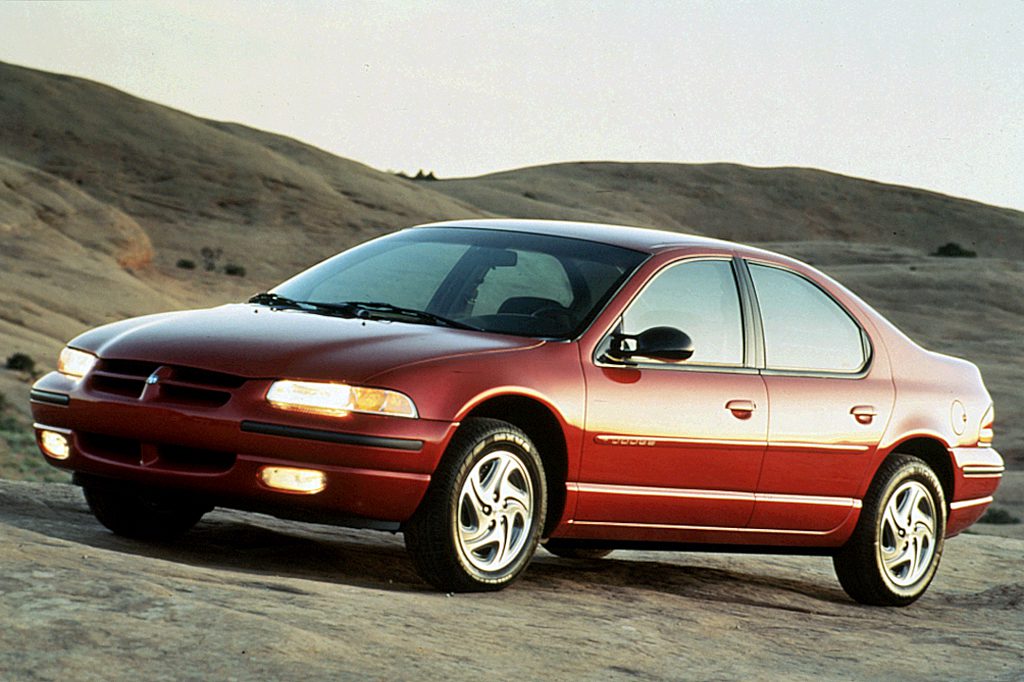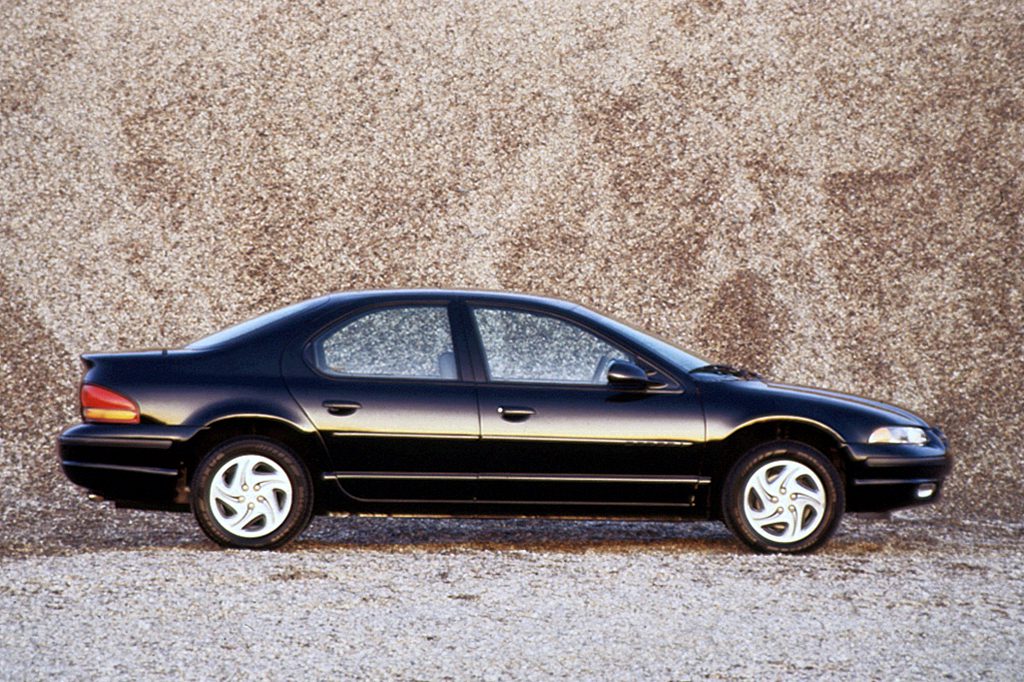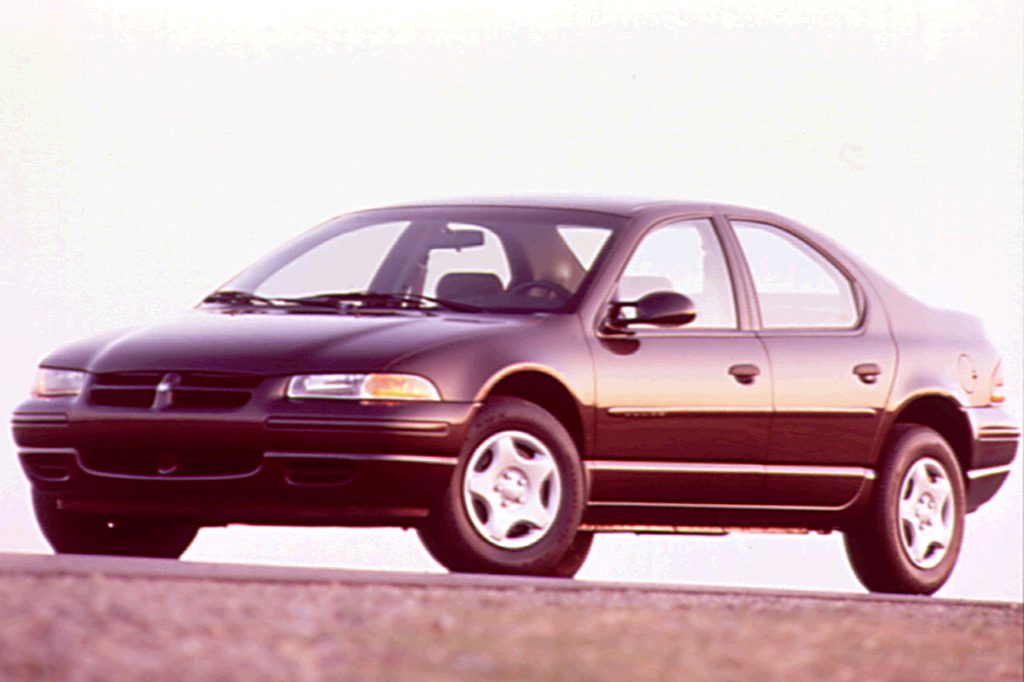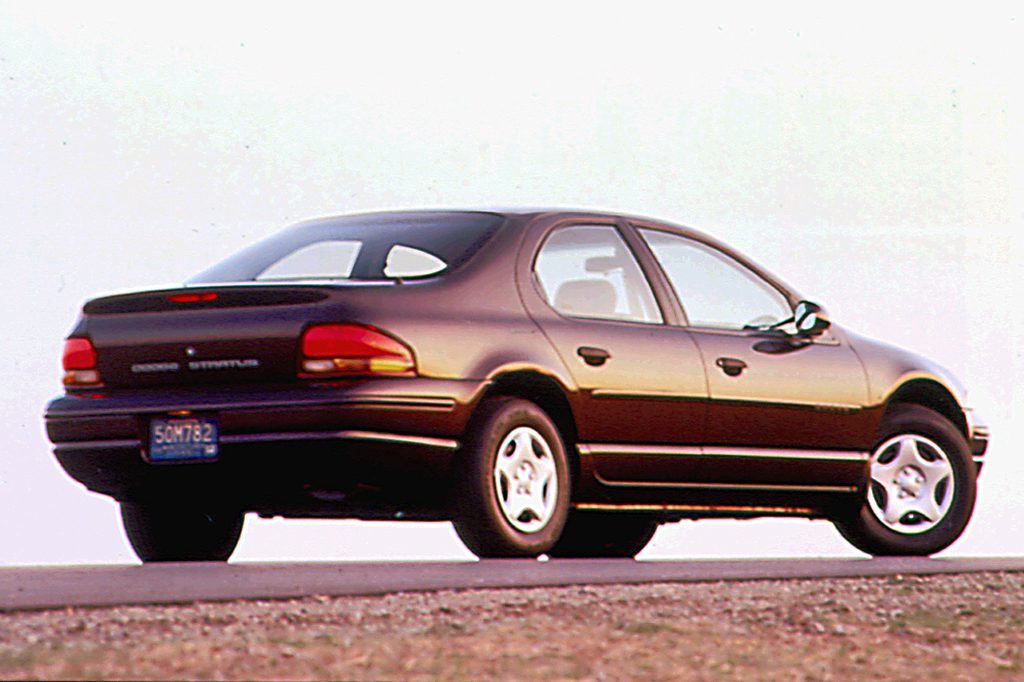| Midsize car; Built in USA |
|
|
| Good condition price range: $1,100 – $2,600* |

1995 Dodge Stratus ES

1995 Dodge Stratus ES

1996 Dodge Stratus

1997 Dodge Stratus

1997 Dodge Stratus
| Pros: |
|
| Cons: |
|
Overall, the large, comfortable interior; moderate price; and attractive styling make the well-equipped Stratus a good buy. Our only reservation might be Chrysler’s past reputation for poor build quality.
Overview
Introduced early in 1995, Stratus is a close cousin of the more luxury-oriented Chrysler Cirrus and the less costly Plymouth Breeze. All three sedans sported unique grilles and different taillights, and Stratus offers a wider engine selection than its mates. Marketed in base and ES trim, Stratus sedans came with standard antilock brakes and dual airbags. Base powertrain was 132-horsepower 2.0-liter 4-cylinder engine and a 5-speed manual transmission. Optional was a new 2.4-liter 4-cylinder with dual overhead camshafts. Also optional, but only on the sportier ES model, was a Mitsubishi-built 2.5-liter V6. Both optional engines drove only a 4-speed automatic transmission, which was not available at all with the base 4-cylinder engine.
Yearly Updates
| 1996 Stratus Few changes appeared this year. A power sunroof became available later in the year, but didn’t last long. Also later in the season, a V6 Stratus could be equipped with Chrysler’s Autostick transmission, permitting shifting up or down through the gears by tilting the shift lever to the left or right. |
| 1997 Stratus Stratus entered its third season with little change, apart from a new floor console between the front seats. |
| 1998 Stratus In a cost-cutting move, antilock brakes were made optional on both models. Sound insulation was beefed up, and a sunroof was again available on all models. |
| 1999 Stratus Stratus got a revised suspension designed to increase ride comfort and standard 4-wheel antilock brakes. Also available were new alloy wheels and a power driver seat. |
| 2000 Stratus A new base model called SE joined the Stratus lineup. With automatic transmission, the SE sedan included the previously optional 150-horsepower 4-cylinder engine. Manual-shift models got a 132-horsepower engine instead. Newly optional was an emergency escape release inside the trunk. |
